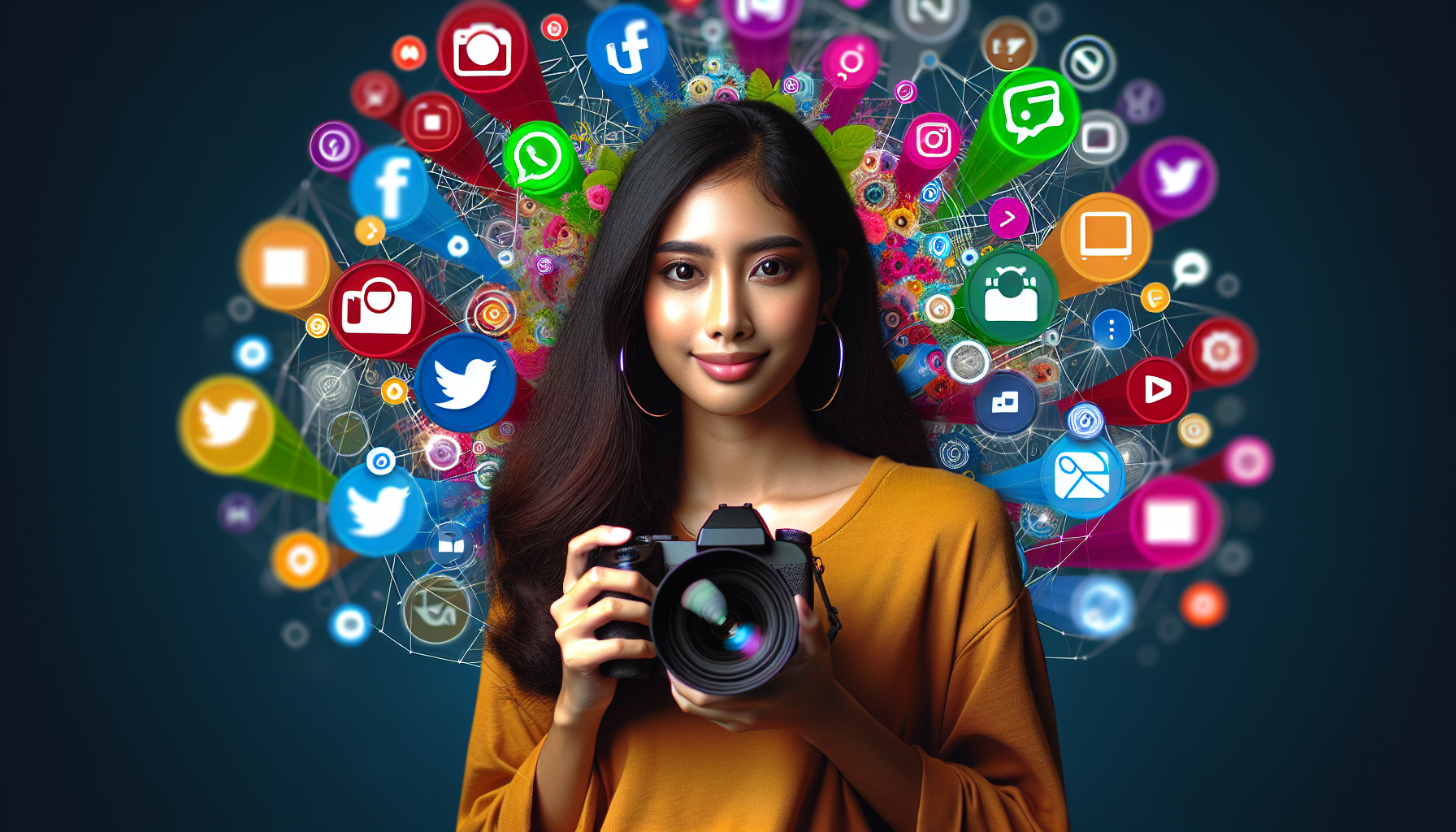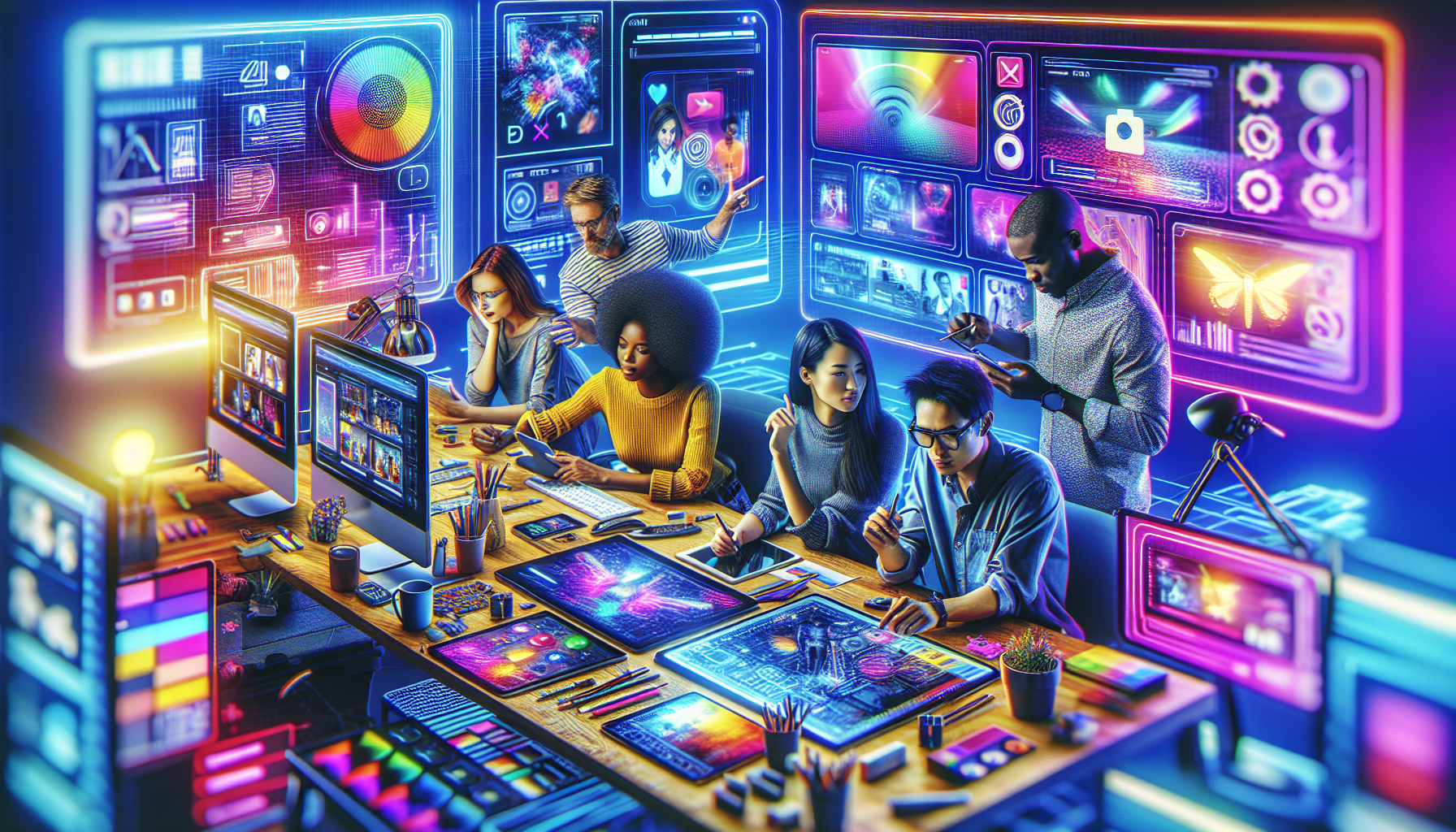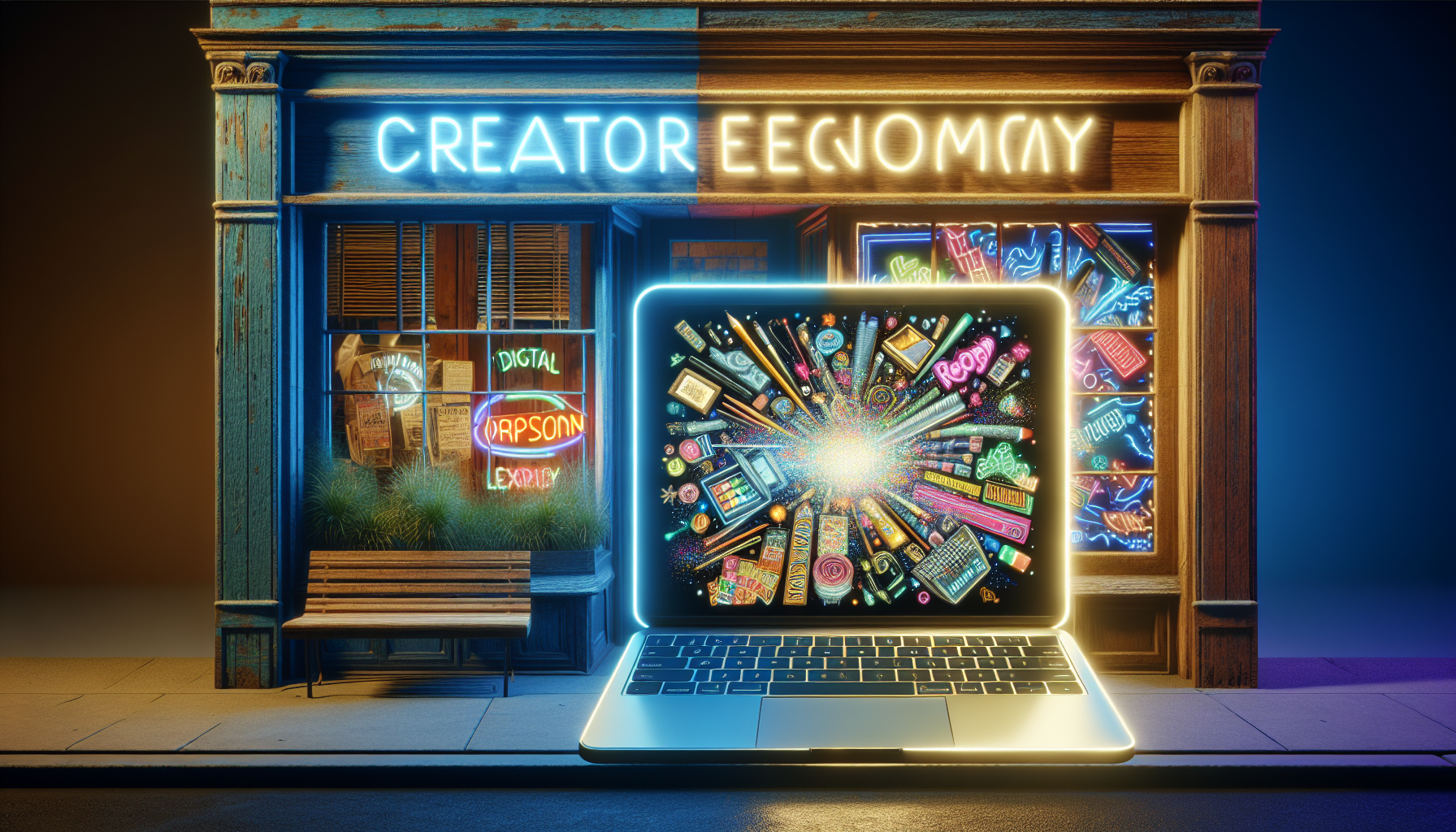
 The evolution of the creator economy has seen exponential growth through the rise of social media platforms, transforming how content creators connect with audiences and monetize their talents. These digital landscapes have democratically opened avenues for individuals from varied backgrounds to showcase their expertise, influencing traditional industries and culture.
The evolution of the creator economy has seen exponential growth through the rise of social media platforms, transforming how content creators connect with audiences and monetize their talents. These digital landscapes have democratically opened avenues for individuals from varied backgrounds to showcase their expertise, influencing traditional industries and culture.
YouTube and Visual Storytelling
YouTube has become a powerhouse, enabling creators to reach a global audience with minimal resources. Devising creative video content, from tutorials to entertainment, has empowered creators like MrBeast, who garners millions of views that transform into lucrative revenue streams through ad revenue, sponsorships, and merchandise sales. By focusing on engagement and creativity, creators have turned their channels into thriving businesses.
Instagram and Influencer Culture
Instagram has crafted an environment where visual content flourishes. By employing aesthetically pleasing photos and engaging stories, creators like Chiara Ferragni have leveraged influencer marketing to collaborate with businesses, crafting authentic partnerships that resonate with audiences. The platform’s built-in e-commerce features allow creators to directly sell products, expanding their income potential.
Diversification with Multi-Platform Presence
Adapting to the dynamic digital landscape, modern creators leverage multiple platforms to diversify their income and broaden their reach. TikTok entices with its rapid virality, enabling creators like Charli D’Amelio to parlay their popularity into lucrative deals. Simultaneously, platforms like Patreon and Substack offer exclusive content for paying subscribers, granting creators a recurring revenue stream and fostering loyal communities.
Impact on Digital Culture
The interplay of social media platforms within the creator economy has democratized content creation. It has shifted the balance of power, enabling individuals to monetize passions directly without relying solely on traditional media gatekeepers. This decentralization has facilitated a shift in digital culture, where diverse voices find platforms to inspire and influence worldwide audiences.
This rise of social media platforms is not merely reshaping income generation strategies for creators but is also redefining the global media landscape, making creativity both accessible and profitable in the digital age. As platforms continue to evolve, they present creators with unprecedented opportunities to engage and thrive in the creator economy.
Monetization strategies for content creators
As social media platforms continue to disrupt traditional media dynamics, content creators are discovering diverse monetization strategies that redefine income generation in the creator economy.
Ad Revenue and Sponsorships
Harnessing platforms like YouTube and Instagram, creators utilize ad revenue as a primary source of income. By partnering with brands for sponsorships, creators like Marques Brownlee showcase tech products, earning substantial income while maintaining authenticity with their audience. These revenue streams allow creators to merge passion with profitability.
Crowdfunding and Subscription Models
Platforms like Patreon and Substack empower creators to establish a direct financial relationship with their audience. Musicians like Amanda Palmer offer exclusive content and behind-the-scenes access in exchange for monthly subscriptions, cultivating a devoted fan base while generating consistent revenue. This model allows creators to focus on quality content without grappling with ad-driven metrics.
Merchandise and E-Commerce
Leveraging their unique personal brands, creators explore selling merchandise to supplement income. YouTube’s integration with Teespring allows creators like PewDiePie to design and sell custom products, creating an additional revenue layer that fans eagerly support. This strategy effectively turns audience loyalty into tangible income.
Digital Products and Services
With expertise in various fields, creators launch digital products like eBooks, courses, and workshops. Educational platforms like Skillshare witness creators monetizing knowledge, helping individuals like Ali Abdaal generate income by teaching productivity lessons. This approach not only diversifies revenue sources but also showcases creators as thought leaders.
Innovative Tech and Tools
The advent of new technologies and platforms offers creators further avenues to monetize their skills. Live streaming platforms like Twitch enable gamers to earn through donations and subscriptions, while Instagram’s shopping feature connects creators directly with consumers, offering a seamless purchase pathway. These innovations enhance the monetization landscape for creators globally.
As these strategies illustrate, the modern creator economy thrives on adaptability and creativity. Social media platforms not only facilitate financial empowerment but also cultivate an ecosystem where passionate individuals can transform hobbies into sustainable careers. By leveraging the full spectrum of available monetization paths, creators navigate a dynamic landscape brimming with opportunity and potential.
Community building and audience engagement
In the creator economy, building a loyal community is as vital as crafting quality content. Social media platforms provide fertile ground for nurturing connections and fostering deep engagement, which creators leverage to strengthen their brand and expand their influence.
Authenticity and Engagement
Creators thrive by authentically interacting with their audience. Platforms like Instagram and TikTok enable real-time connections through comments, direct messages, and live streams, fostering a sense of intimacy. Influencers such as Emma Chamberlain excel by sharing genuine, relatable content, inviting audiences into their lives, and sparking conversations that resonate. By treating their followers as a community rather than mere viewers, creators build trust and loyalty that translates into sustained engagement and support.
Interactive Features and Community Spaces
Social media platforms offer a plethora of tools designed to enhance interaction. Features like Instagram’s Stories, Twitter Spaces, and Facebook Groups create dedicated spaces for fans to engage, share, and connect over mutual interests. Content creators like Gary Vaynerchuk utilize these spaces to host exclusive Q&A sessions and offer personalized advice, positioning themselves as accessible thought leaders in their niches. This interaction enriches the audience’s experience, making them feel valued and connected.
Utilizing User-Generated Content
Encouraging user-generated content is another powerful strategy for community building. Platforms like YouTube and TikTok join creators and fans in celebration, fostering a participatory culture. Social influencer brands such as Fenty Beauty harness user-generated content by resharing fan photos and videos, effectively transforming customers into brand ambassadors. This strategy amplifies reach while fostering a sense of belonging and ownership among followers.
Impact of Community on Monetization
A engaged community not only enhances a creator’s reach but also their earning potential. Brands are keen to partner with creators who boast active, passionate followings, as these audiences are more likely to convert into customers. This dynamic is evident with creators like Lilly Singh, who secures lucrative sponsorship deals due to her robust fan base. Additionally, platforms like Patreon thrive on community-centric models, allowing creators to offer exclusive perks and content to engaged subscribers, driving steady revenue streams.
Through strategic community building and engagement, creators are reshaping the digital culture and economics of the creator economy. By fostering genuine connections and interactive spaces, they cultivate not just audiences but vibrant communities that enhance both their personal brand and financial prospects.
Challenges and opportunities for creators
Navigating the creator economy presents both challenges and opportunities for social media influencers and content producers alike. As platforms proliferate, creators face a landscape that is both promising and demanding, requiring agility and foresight to thrive.
Over-Saturation and Competition
The rapid growth of social media platforms has led to an influx of creators, saturating the digital space. Emerging creators often find it challenging to stand out amidst the competition. Yet, this also drives creativity, urging individuals to carve unique niches and innovate constantly. Successful creators like Zach King, known for his magical video edits, exemplify the power of distinct content in rising above the noise.
Algorithm Changes and Platform Dependency
Creators often grapple with frequent algorithm updates that can affect visibility and income. The unpredictability of platforms like Instagram’s feed algorithm can disrupt engagement strategies. To combat this dependency, many creators diversify their presence across platforms to mitigate risks. Tools like Hootsuite and Buffer assist in managing multi-platform strategies, ensuring creators maintain consistent engagement despite changes.
Monetization and Financial Sustainability
Income diversification is both a necessity and an opportunity. While ad revenue alone may not suffice for financial stability, platforms like Twitch offer alternative monetization routes through subscriptions and bits, giving creators avenues for a steady income. Creators who leverage Patreon can offer a subscription model for exclusive content, nurturing a sustainable financial ecosystem that isn’t solely reliant on advertising dollars.
Global Reach Meets Cultural Sensitivity
The borderless nature of social media platforms opens up vast audiences but also demands cultural sensitivity and awareness. Creators must navigate diverse cultural landscapes tactfully, tailoring content that resonates globally while respecting cultural nuances. Successful creators like Lilly Singh have mastered the balance of globally appealing content that acknowledges and embraces cultural diversity.
Technological Advancements and Opportunities
Emerging technologies like Virtual and Augmented Reality present creators with opportunities to push content boundaries. Platforms integrating these technologies allow creators to offer immersive experiences, engaging audiences on deeper levels. As technology evolves, creators have the chance to be pioneers, shaping new eras in the digital space.
In the vast world of the creator economy, challenges imbued with opportunities invite creators to innovate courageously. Navigating these dynamics not only demands adaptability and creativity but also a robust understanding of how social media platforms function within this economy. This interplay continues to shape digital culture, offering creators who embrace both challenges and opportunities the chance to redefine success in the modern age.
The future of social media in the creator economy
The creator economy is poised for an exciting transformation as social media platforms continue to evolve. As we venture into the future, these platforms are not just spaces for sharing content but are becoming integrated ecosystems that fuel the creator economy on a global scale.
The Continued Evolution of Platforms
Social media giants like YouTube, Instagram, and TikTok are constantly innovating, introducing features like live shopping, advanced analytics, and creator funds. YouTube Shorts, for instance, is capturing the short-form video craze by rewarding creators through its $100 million Shorts Fund, demonstrating a commitment to sustaining creator profitability and engagement. Such developments signify a thriving ecosystem supporting diverse content types and monetization paths.
Expanding Monetization Horizons
The future holds a plethora of monetization opportunities for creators. Platforms like Substack are championing newsletter-based income for writer-creators, while tools like Patreon and Buy Me a Coffee continue to bolster subscription-based revenue models. This diversification enables creators to have a stable financial foundation, reducing the over-reliance on ad revenue, and allowing creative freedom in content development.
Immersive Technologies and New Frontiers
With the rise of augmented reality (AR) and virtual reality (VR), social media platforms are exploring these immersive technologies to enrich user experiences. Platforms like Snapchat are already spearheading AR with filters and lenses, setting the stage for creators to offer interactive content that could redefine audience engagement. The integration of such technologies holds the potential to transform the creator economy into a more experiential sphere.
Harnessing Data and Analytics
Data-driven insights are becoming increasingly critical for creators aiming to optimize their content strategies. Enhanced analytics offered by platforms such as Instagram Insights allow creators to tailor their content based on audience behavior, demographics, and preferences. This data empowerment aids creators in making informed decisions, fostering deeper connections with their audience, and capitalizing on trends to expand their reach.
Shaping Digital Culture and Income Streams
As social media platforms forge new pathways for creators, they transcend traditional media models, reimagining content creation as a lucrative career path. This paradigm shift not only empowers individuals to monetize their passions but also democratizes content creation on a global scale. In this evolving landscape, the creator economy will continue to redefine digital culture and open new income streams for those willing to innovate and adapt.

